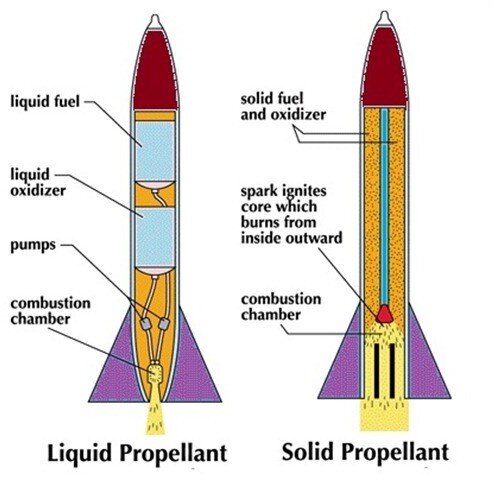
Exploring the Depths of Space Propulsion: Liquid-Fueled vs. Solid-Fueled Rockets
The conquest of space has been one of humanity’s greatest achievements, and at the core of this endeavor are the rockets that propel us beyond Earth’s atmosphere. Rockets come in various forms, but two primary categories dominate the field: liquid-fueled and solid-fueled rockets. In this comprehensive article, we will delve into the fundamental differences between these two propulsion systems, exploring their designs, advantages, disadvantages, and their roles in the exploration of space.
The Basics: Rocket Propulsion
Before we dive into the specific types of rocket engines, let’s first understand the basic principles of rocket propulsion. Rockets operate on the principle of action and reaction, as articulated in Newton’s third law of motion: “For every action, there is an equal and opposite reaction.” In simple terms, when a rocket expels mass in one direction (the exhaust), it experiences a force in the opposite direction, which propels it forward.
Liquid-Fueled Rockets
Liquid-fueled rockets are a common choice for space exploration and satellite launches. They are characterized by their intricate designs, which include separate tanks for the fuel and oxidizer. Key components of liquid-fueled rockets include:
- Propellants: Liquid-fueled rockets use liquid propellants consisting of a fuel and an oxidizer. Common fuels include liquid hydrogen (LH2), kerosene, and hydrazine, while oxidizers typically include liquid oxygen (LOX) or nitrogen tetroxide (N2O4).
- Thrust Control: Liquid rockets offer precise thrust control by adjusting the flow rates of the propellants. This allows for efficient maneuvering and control during various phases of a mission.
- Complexity: Liquid rocket engines are complex, consisting of pumps, valves, and combustion chambers. They require more extensive engineering and are often more expensive to develop and manufacture.
- Efficiency: Liquid engines tend to be more efficient in terms of specific impulse (a measure of propulsion efficiency) compared to solid engines, making them ideal for missions requiring precision and fine-tuned adjustments.
- Multiple Burns: Liquid rockets can be throttled or shut down and reignited, allowing for multiple burns during a mission, such as course corrections or orbital insertions.
Solid-Fueled Rockets
Solid-fueled rockets, on the other hand, are known for their simplicity and reliability. They are often used in military applications, fireworks, and some space missions. Key features of solid-fueled rockets include:
- Propellant: Solid rockets use a single, solid propellant mixture, typically composed of fuel and oxidizer combined into a solid grain or core. Common propellants include ammonium perchlorate and powdered metals.
- Thrust Control: Solid rockets have limited thrust control, mainly achieved by altering the shape of the nozzle or by staging multiple rockets. They are less maneuverable than liquid rockets.
- Simplicity: Solid engines are less complex and easier to manufacture than their liquid counterparts, making them cost-effective and reliable for certain applications.
- No Shutdown: Once ignited, solid rockets cannot be shut down or restarted. They provide continuous thrust until all the propellant is consumed.
- Vibration and Shock Resistance: Solid rockets are known for their ruggedness, making them suitable for military and defense purposes where shock and vibration resistance are crucial.
Applications and Trade-Offs
Both liquid-fueled and solid-fueled rockets have their respective strengths and weaknesses, which determine their applications:
- Liquid Rockets are preferred for missions requiring precision, control, and flexibility. They are commonly used for launching satellites, space exploration missions, and crewed spaceflight.
- Solid Rockets find applications in military missiles, fireworks displays, and as boosters for launching payloads into space. Their simplicity and reliability make them ideal for these purposes.
Conclusion
In the vast expanse of space exploration and beyond, the choice between liquid-fueled and solid-fueled rockets is not a matter of one being inherently superior to the other. Instead, it’s about selecting the right tool for the job. Liquid rockets offer precision and control, making them suitable for delicate space missions. In contrast, solid rockets provide simplicity and reliability, making them ideal for military and commercial applications. Together, these two propulsion technologies have propelled humanity to new frontiers, making possible the exploration of distant planets and the realization of ambitious space missions that once existed only in the realm of science fiction.

